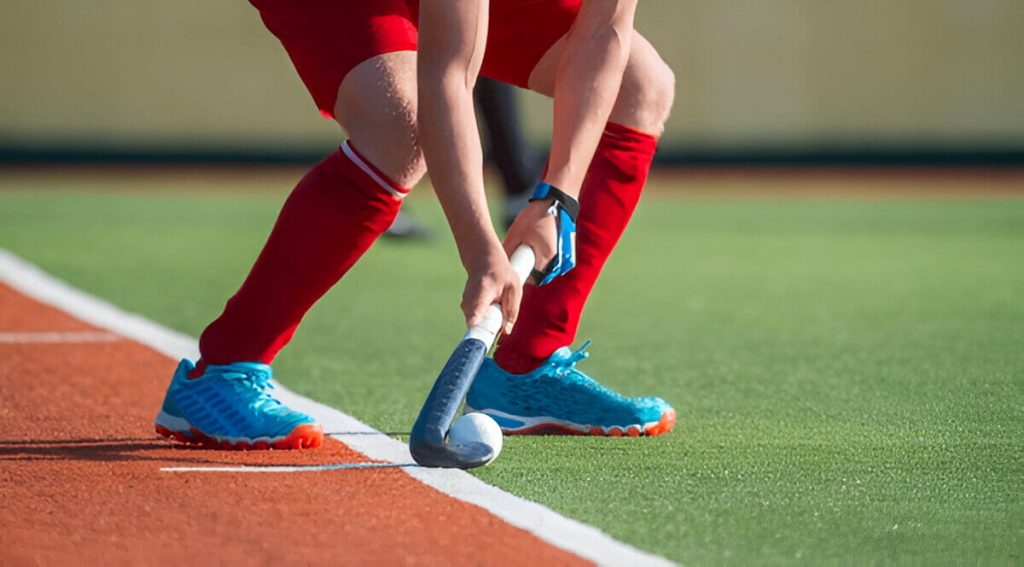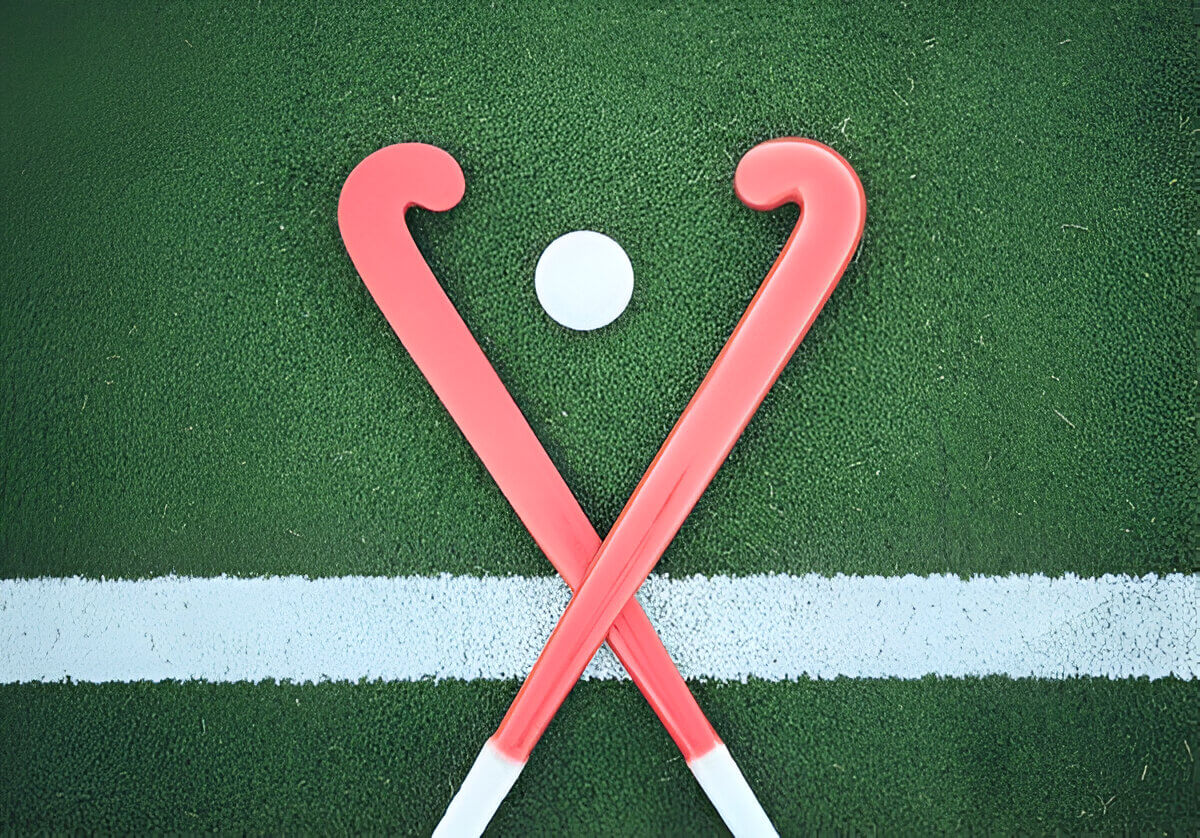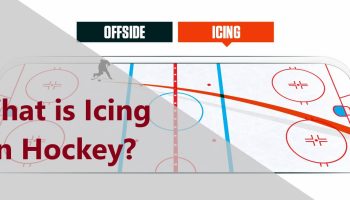Field hockey is a dynamic sport that captivates with its fast-paced action and strategic gameplay. This guide covers essential aspects, including rules, skills, equipment, positions, leagues, and tournaments. Whether you’re experienced or new to the game, learn how field hockey enhances physical fitness and mental well-being. Discover everything you need to embrace this thrilling sport.
What is Field Hockey?
Field hockey is a dynamic and fast-paced team sport played on grass, turf, or synthetic fields. It involves two teams of eleven players each, including a goalkeeper, who use curved sticks to hit a small, hard ball with the aim of scoring goals in the opposing team’s net. The sport is renowned for its combination of skillful stickwork, strategic playmaking, and intense physicality.
The history of field hockey dates back thousands of years with origins traced to ancient civilizations in Egypt and Persia. However, the modern version as we know it began to take shape in 19th century England. The first formal set of rules was developed by the Hockey Association in London in 1886, which helped standardize the game and promote its growth internationally.
Today, field hockey is played worldwide and features prominently in international competitions such as the Olympics and World Cup. It is especially popular in countries like India, Pakistan, Australia, Netherlands, and Germany. As a sport that emphasizes teamwork and agility over brute strength, field hockey offers an exciting blend of strategy and athleticism that continues to captivate players and fans alike across the globe.
The Rules and Regulations of Field Hockey

Field hockey is a dynamic and strategic sport governed by a set of rules and regulations that ensure fair play and safety for all participants. Understanding these rules is essential for players, coaches, and enthusiasts alike.
One of the foundational aspects of field hockey is the field itself. The standard field dimensions are 100 yards long and 60 yards wide, with distinct markings for the shooting circle, penalty spots, and center line. These dimensions are crucial as they dictate how the game unfolds strategically.
Player positions in field hockey are another critical component of the game. Each team consists of 11 players on the field at any time: one goalkeeper and ten outfield players who can be forwards, midfielders, or defenders. The specific roles within these positions can vary based on team strategy but generally include attacking, supporting playmaking, or defensive responsibilities.
When it comes to gameplay regulations, several key rules must be adhered to. For instance, only the flat side of the stick can be used to hit the ball; using feet or any other part of the body is considered a foul unless it’s accidental or unintentional from a defender inside their own circle. Penalty corners and strokes are awarded for specific infringements within certain areas of play.
Understanding these fundamental rules not only enhances appreciation for this fast-paced sport but also ensures that all participants engage in fair competition while maximizing enjoyment on the field.
The Essential Equipment for Playing Field Hockey
Field hockey is a dynamic sport that requires players to be well-equipped for both performance and safety. Understanding the essential equipment for playing field hockey can enhance your game experience and ensure you are adequately protected on the field.
At the top of any field hockey equipment list is the stick. Field hockey sticks come in various lengths and materials, often made from wood, fiberglass, or carbon fiber. The choice of stick depends on your playing style and position; defenders might prefer longer sticks for reach, while forwards might opt for shorter sticks for better maneuverability.
Protective gear is crucial in safeguarding players from potential injuries. Key pieces include shin guards to protect against ball impacts and collisions with other players’ sticks, mouthguards to prevent dental injuries, and gloves to shield hands during play. Some players also choose to wear padded shorts or protective eyewear for additional safety.
The ball used in field hockey has specific specifications: it must be spherical with a circumference between 224 mm and 235 mm and weigh between 156 grams and 163 grams. Typically made of plastic, the ball has a smooth surface but may feature dimples to improve aerodynamics on artificial turf surfaces.
By equipping yourself with the right gear, you can enjoy playing field hockey while minimizing the risks associated with this fast-paced sport.
Field Hockey Techniques and Skills Every Player Should Know
Field hockey is a dynamic and fast-paced sport that requires players to master a variety of techniques and skills to excel on the field. Understanding and practicing these essential skills can significantly enhance a player’s performance and contribute to the team’s success.
One of the fundamental field hockey skills is dribbling. Effective dribbling techniques allow players to maneuver the ball with precision while maintaining control, even at high speeds. Players should focus on using both sides of the stick, keeping their heads up to survey the field, and developing agility to dodge opponents.
Passing strategies in field hockey are equally crucial. Accurate passing not only facilitates fluid gameplay but also opens up opportunities for strategic plays. Players should practice different types of passes, such as push passes for short distances and hit passes for longer ranges, ensuring they can adapt their passing technique based on game situations.
Tackling methods in field hockey are vital defensive skills that every player should master. Timing is key when executing tackles; players must anticipate their opponent’s moves and use clean stick work to intercept or dispossess without committing fouls. Mastery of tackling enhances a team’s defensive strength and disrupts opposing attacks effectively.
By honing these core techniques (dribbling, passing, and tackling) field hockey players can elevate their game play significantly, contributing not only as individuals but also as integral parts of their teams’ overall strategy.
Leagues and Major Tournaments in Field Hockey
Field hockey, a sport with a rich history and global appeal, boasts a competitive landscape filled with prestigious leagues and major tournaments that capture the attention of fans worldwide. At the pinnacle of these events is the World Cup of Field Hockey, held every four years for both men and women. This tournament is a showcase of the highest level of skill and competition, drawing teams from across the globe to compete for the coveted title.
In addition to the World Cup, other major field hockey tournaments include the Olympic Games, where field hockey has been featured since 1908 for men and 1980 for women. The Olympics offer an unparalleled platform for athletes to demonstrate their prowess on an international stage.
Beyond these marquee events, various international leagues contribute significantly to field hockey’s competitive environment. The FIH Pro League is one such example, providing regular high-stakes matches between top national teams in a home-and-away format. This league not only enhances team performance but also increases visibility and fan engagement globally.
Regional championships like the EuroHockey Nations Championship or Pan American Games further enrich this competitive landscape by offering opportunities for regional supremacy and qualification pathways to larger global contests.
The vibrant mix of major tournaments and international leagues ensures that field hockey remains an exciting sport with continuous opportunities for teams to compete at elite levels while captivating audiences around the world.
The Benefits of Playing Field Hockey for Physical and Mental Health
Field hockey is not only an exhilarating sport but also a fantastic way to enhance both physical and mental health. One of the primary health benefits of playing sports like field hockey is improved physical fitness. The game involves constant movement, including running, sprinting, and quick directional changes, which collectively boost cardiovascular endurance and improve overall agility. Additionally, the sport helps in building muscle strength and enhancing coordination due to its dynamic nature.
Beyond the physical advantages, field hockey also contributes significantly to mental well-being. Engaging in team sports fosters a sense of community and belonging, which can be incredibly beneficial for mental health. It encourages teamwork and communication skills while reducing stress levels through regular physical activity. Furthermore, being part of a team provides emotional support from peers, enhancing mood and promoting a positive outlook on life.
Incorporating field hockey into your routine offers a comprehensive approach to maintaining both body and mind healthfully balanced. Whether you’re looking to improve your fitness levels or seeking ways to enhance your mental resilience, field hockey presents an excellent opportunity to achieve these goals through an enjoyable sporting experience.
Getting Started with Field Hockey-Tips for Beginners and Enthusiasts Alike
Field hockey is a dynamic and exciting sport that offers both beginners and enthusiasts the opportunity to develop skills, enhance physical fitness, and enjoy the camaraderie of team play. For those new to the game, starting with the basics is crucial. Familiarize yourself with the rules and essential equipment (such as sticks, balls, shin guards, and appropriate footwear) to ensure safety and compliance on the field.
Joining a local club or team can provide valuable experience through practice sessions and matches. It also allows you to learn from more experienced players who can offer guidance on techniques like dribbling, passing, shooting, and defensive maneuvers. Additionally, watching professional games can be an excellent way to observe strategies in action.
For enthusiasts looking to deepen their involvement in field hockey, focusing on fitness levels is key. Incorporating exercises that improve speed, agility, endurance, and strength will greatly enhance your performance during games. Engaging in drills that simulate match conditions will also help refine your skills under pressure.
Whether you’re just getting started or seeking to elevate your game further as an enthusiast, remember that consistency is vital. Regular practice not only hones your abilities but also builds confidence on the field. Embrace every opportunity to play and learn after all; field hockey is as much about enjoying the journey as it is about mastering the sport itself.





